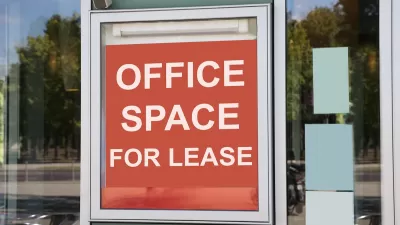Many federal agencies are sitting on underutilized buildings, causing a congressional committee to call into question the need for so much real estate.

A report from the U.S. Government Accountability Office reveals that 17 out of 24 federal agencies are only using 25 percent of their headquarters buildings’ office space, calling into question the need for the 360 million square feet of office space managed by the General Services Administration. Nish Amarnath reports on the issue for Smart Cities Dive.
Calling the finding ‘alarming,’ Senate Committee on Environment and Public Works Chairman Senator Tom Carper (D-Del) said at a hearing that the vacancy is “not a sustainable or fiscally responsible way to manage our federal real estate.”
With more federal workers working remotely, committee members called on the federal government to stop wasting taxpayer funds on empty or underutilized buildings. “Committees have done a lot of legislative work to support policies that will reduce emissions. I would be interested to know the emissions associated with heating and cooling these buildings that are unoccupied,” said Sen. Shelley Moore Capito (R-W.Va).
According to Amarnath, “Capito recommended that federal agencies identify their current and future space needs to help the GSA evaluate lease options or invest appropriately in existing buildings.” With many leases expiring in 2027, agencies could take this opportunity to reevaluate their needs. “David Marroni, acting director of physical infrastructure at the GAO, pointed to the importance of having more consistent benchmarks and targets for measuring and determining space utilization. That involves developing more uniform standards for space measurement and assessing what constitutes full utilization rather than using a one-size-fits-all approach, he said at the hearing.”
FULL STORY: ‘Empty’ federal buildings under scrutiny

Planetizen Federal Action Tracker
A weekly monitor of how Trump’s orders and actions are impacting planners and planning in America.

San Francisco's School District Spent $105M To Build Affordable Housing for Teachers — And That's Just the Beginning
SFUSD joins a growing list of school districts using their land holdings to address housing affordability challenges faced by their own employees.

The Tiny, Adorable $7,000 Car Turning Japan Onto EVs
The single seat Mibot charges from a regular plug as quickly as an iPad, and is about half the price of an average EV.

With Protected Lanes, 460% More People Commute by Bike
For those needing more ammo, more data proving what we already knew is here.

In More Metros Than You’d Think, Suburbs are Now More Expensive Than the City
If you're moving to the burbs to save on square footage, data shows you should think again.

The States Losing Rural Delivery Rooms at an Alarming Pace
In some states, as few as 9% of rural hospitals still deliver babies. As a result, rising pre-term births, no adequate pre-term care and "harrowing" close calls are a growing reality.
Urban Design for Planners 1: Software Tools
This six-course series explores essential urban design concepts using open source software and equips planners with the tools they need to participate fully in the urban design process.
Planning for Universal Design
Learn the tools for implementing Universal Design in planning regulations.
Smith Gee Studio
City of Charlotte
City of Camden Redevelopment Agency
City of Astoria
Transportation Research & Education Center (TREC) at Portland State University
US High Speed Rail Association
City of Camden Redevelopment Agency
Municipality of Princeton (NJ)





























